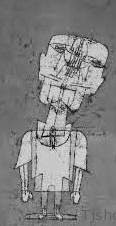many Turing machines
We randomly implement a Turing machine Tm with N states, using a Geiger counter plus radioactive material as 'quantum coin'. We proceed as follows: First we use the 'quantum coin' to determine (with probability 1/2) if the Tm has N=2 (head) or N>2 (tail) states. If we got tail, we use the 'quantum coin' again to see if N=3 or N>3 and so on and so forth.
Once we have determined N in that way, we then construct the transition table(s) of the Tm, using the 'quantum coin' again and again, so that all (8N)N possible transition tables could be realized.
Once this construction is finished, we start the Tm on a tape with a few 1s sprinkled on it and then watch what happens.
This experiment is easy to understand if we follow the Copenhagen interpretation. The Tm we will build is most likely quite simple, because the probability for a complex N-state Tm decreases rapidly as 1/2N-1. Once the Tm is put together, its evolution is not even a quantum mechanics problem any more. If we want, the transition table(s) of this particular Tm can be inspected before it runs, to determine if it will halt.
But this experiment is much more difficult to understand within a many worlds interpretation: Every use of the 'quantum coin' splits the world and thus we are dealing with a wave function of the universe which contains every possible Tm in one of its branches. The amplitudes assigned to worlds with N-state machines are quite small if N is large, but all the worlds are equally real.
Unfortunately, due to the Halteproblem, the evolution of this wave function is uncomputable. In other words, the wave function of the universe does not have a mathematical description at all.
The best part of this experiment is that I do not even have to do it myself. Somewhere in the universal wavefunction there is already a branch where somebody, somewhere in the universe, has decided to do this experiment (*). This means that the amplitude of my branch is already uncomputable (x).
(*) This also takes care of the counter argument that on Earth resources are finite and thus the experiment has to terminate at a certain (large) N0. Since we have to consider the wave function of the multiverse (of infinite size), this argument is not convincing, because we cannot know N0.
(x) Notice that the overlap between different branches of the wave function is very small, due to decoherence, but in general non-zero.
Subscribe to:
Posts (Atom)
